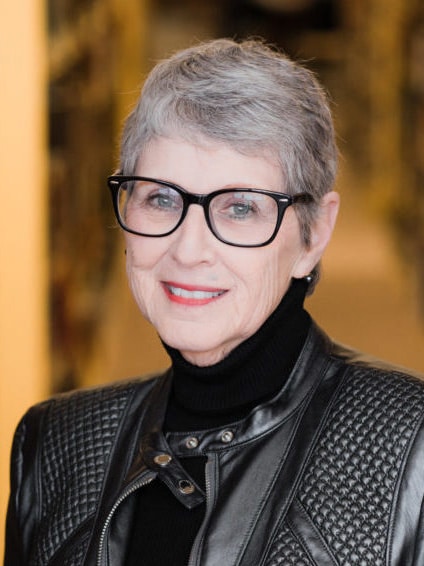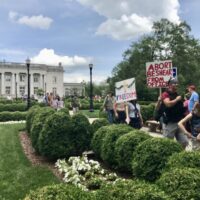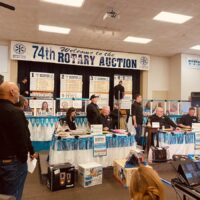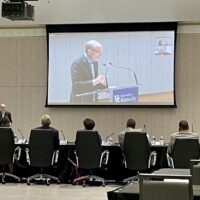It’s official. Word of the Year 2020, according to Collins Dictionary, is “lockdown.” Defined as “imposition of stringent restrictions on travel, social interaction, and access to public spaces,” the word registered a 6,000 percent increase in usage from 2019 to 2020.

With the world in the grip of a pandemic, and an eye toward documenting this historic lockdown era, museums are seeking documentation associated with the prolonged state of emergency precipitated by COVID-19. Inspired by that thought, I asked students in my Humanities class at Murray State University to suggest artifacts they might donate to our own Coronavirus Museum. It was an apt assignment since we were exploring the theme of Isolation in our semester’s readings and activities.
Responses ranged from sad, to surprising, sweet, sobering, sybaritic, and even silly.
One student offered the artifact of her great-grandma’s recipe for zucchini bread. “While COVID has been devastating to the world,” she remarked, “being under quarantine gave me an opportunity to slow down … I made zucchini bread many times throughout the summer and shared it to spread some of the happiness I felt while making it.”
Another student suggested that an episode of the TV sitcom “Friends” should be displayed in our museum. “The COVID-19 breakout was a blessing in disguise for me,” she said. “I was able to be ‘stuck’ at home with my family, and it was needed time spent together.”
“I hadn’t remembered the last time my entire family sat down and ate dinner together,” she continued, “and we were doing it every night during lockdown. After dinner, we were all able to spend the evening together, watching our favorite TV show, ‘Friends.’”
An international student was excited to submit a collection of board games she and her boyfriend assembled during lockdown this summer. Acknowledging that her generation was typically enamored of videogames, she explained, “These games have brought a great joy to me during these unprecedented days.”
“You can see each other’s expressions, making decisions in real time and providing a completely different atmosphere than any video games can do,” she added.
With lockdowns freeing up time that would have been spent elsewhere, another student used the extended hiatus to explore the medium of photography as a fun and creative enterprise. “I have had the opportunity to take senior pictures, engagement pictures, newborn pictures, and was even asked to photograph a wedding,” she reported.
“So in the midst of the chaos and heartbreak that has come with this pandemic,” she went on, “I’ve found my passion. It is important to celebrate the little things, especially when everything around you seems so grim.”
Photographs were significant artifacts to others for different reasons. One young woman wanted to share candid shots of her and her parents, because they had gotten out of the habit of spending time together. “I realized that this would probably be the last period of time when we would be together so much,” she said.
“Since leaving for college, I am only home a few months out of the year, and of those few months, I rarely ever spend quality time with my parents. After I graduate,” she confessed, “I will be moving out of the house. Those few months of lockdown created memories that I will never forget.”
Those working in health care settings identified artifacts that revealed the more sobering aspects of the pandemic. One student, a nurse, thought a real-life artifact would be a used or re-used N95 or CAPR helmet system, “so the public can see the lengths we went to so we could try to stay healthy.”
“If I had to leave something for a COVID exhibit,” another student admitted, “I would probably leave my prayer journal.
“While this would be a very intimate item to leave, one could truly encompass the fear, uncertainty, and fight to just stay afloat,” she declared. “I have always been raised in church and been taught to trust God … but COVID tested that trust in major ways. One could see the emotion felt, the losses that I had to pray about, and the fears of what my future as a nurse and consumer of the world, would look like.”
Dollars and cents offered further inspiration. A Logistics and Supply Chain major would submit a $100 bill to the museum, paying tribute to the many people who lost jobs during quarantine. “I feel as if a monument dedicated to the economy would do very well in this museum,” he declared.
The list of artifacts continued to grow as more ideas flourished. We ended up with a pair of running shoes, a golf club, sweatpants and a big T-shirt, a stack of books that had been read over the months of quarantine, and Fleetwood Mac’s Greatest Hits.
One single parent in my class mused, “The pandemic has been terrible for our country and the world, but there have definitely been happy things to look at and remember. Some people have been honored with chances they would have never been able to do before, like becoming a stay-at-home parent or getting to travel and see things they would have never been able to do. I know photos of my son and me do not necessarily show how the world changed … but they show how my life has changed in a way I never believed it would.”
My own life has changed in many ways during the siege. In March, when the severity of the virus was becoming apparent, my hair was short and straight, as it has been for years. By June, when I finally got a haircut, it was curly. I’m not talking a wave here and there; it is darn near Darrell Hammond or Shirley Temple.
So lockdown has been enough to curl my hair; that is my artifact for the COVID Museum.
What’s yours?
(Constance Alexander is a columnist, award-winning poet and playwright, and President of INTEXCommunications in Murray. She is a board member for Hoptown Chronicle. This column first ran in www.kyforward.com She can be reached at calexander9@murraystate.edu. Or visit www.constancealexander.com.)






